六氟磷酸亚硝离子, 96%,Nitrosonium hexafluorophosphate
产品编号:西域试剂-WR368748| CAS NO:16921-91-8| MDL NO:MFCD00040324| 分子式:F6NOP| 分子量:174.96
本网站销售的所有产品仅用于工业应用或者科学研究等非医疗目的,不可用于人类或动物的临床诊断或者治疗,非药用,非食用,
| 英文名称 | Nitrosonium hexafluorophosphate |
|---|---|
| CAS编号 | 16921-91-8 |
| 精确质量 | 174.96200 |
| PSA | 37.38000 |
| LogP | 3.27868 |
| 外观性状 | 无色或白色晶体 |
| 稳定性 | 常温常压下稳定 避免的物料:水分/潮湿 酸 |
| 储存条件 | 常温密闭避光,通风干燥惰性气体下 |
相关文档
化学品安全说明书(MSDS)
下载MSDS质检证书(COA)
相关产品
| 危害码 (欧洲) | C: Corrosive;T: Toxic; |
|---|---|
| 风险声明 (欧洲) | R34 |
| 安全声明 (欧洲) | S45-S36/37/39-S26 |
| 危险品运输编码 | 1759 |
| 包装等级 | III |
| 危险类别 | 6.1 |
|
Section 1: Product Identification Chemical Name:Nitrosonium hexafluorophosphate, min. 97% CAS Registry Number:16921-91-8 Formula:NOPF6 EINECS Number:240-980-9 Chemical Family:metal fluorophosphate complex Synonym:Nitrosyl Tetrafluorophosphate
Section 2: Composition and Information on Ingredients IngredientCAS NumberPercentACGIH (TWA)OSHA (PEL) Title Compound16921-91-8100%2.5mg/m3 (as F)2.5mg/m3 (as F) Section 3: Hazards Identification Corrosive to skin, eyes and respiratory tract. Ingestion causes damage to the mouth, throat and esophagus. Emergency Overview: May cause fluoride poisoning. Primary Routes of Exposure:Contact with skin and eyes. Inhalation of dust and vapors. Eye Contact:Causes burns to the eyes. May cause blindness. Skin Contact:Causes burns with redness and pain. Effects may be delayed. Causes burns to the respiratory tract. Nitrogen dioxide can cause tachycardia, chest pain, and pulmonary Inhalation: edema. Ingestion:Ingestion causes damage to the mouth, throat and esophagus. Corrosive to eyes, skin, respiratory tract and gastrointestinal tract. Fluoride poisoning may cause nausea, Acute Health Affects: vomiting, diarrhea, weakness, coma, respiratory failure and cardiovascular collapse. Chronic Health Affects:Prolonged exposure to hydrolysable fluorine compounds can cause deterioration of bone and tooth structure. NTP:No IARC:No OSHA:No SECTION 4: First Aid Measures Immediately flush the eyes with copious amounts of water for at least 10-15 minutes. A victim may need Eye Exposure: assistance in keeping their eye lids open. Get immediate medical attention. Immediately flush the eyes with copious amounts of water for at least 10-15 minutes. A victim may need Skin Exposure: assistance in keeping their eye lids open. Get immediate medical attention. Remove the victim to fresh air. Closely monitor the victim for signs of respiratory problems, such as difficulty Inhalation: in breathing, coughing, wheezing, or pain. In such cases seek immediate medical assistance. Seek medical attention immediately. Keep the victim calm. Give the victim water (only if conscious). Induce Ingestion: vomiting only if directed by medical personnel. SECTION 5: Fire Fighting Measures Flash Point:not applicable Autoignition Temperature:not applicable Explosion Limits:not applicable Extinguishing Medium:none required Fire fighters should be equipped with a NIOSH approved positive pressure self-contained breathing apparatus Special Fire Fighting Procedures: and full protective clothing. Hazardous Combustion andIf involved in a fire this material may emit corrosive fluorophosphoric acid. Decomposion Products: Unusual Fire or Explosion Hazards: May act as an oxygen source in a fire. May liberate pressurizing gas if strongly heated. SECTION 6: Accidental Release Measures Small spills should be covered with calcium carbonate or limestone, and swept up, or flushed with water and Spill and Leak Procedures: sponged up. SECTION 7: Handling and Storage Store in a tightly sealed container. Keep away from heat, moisture and direct sunlight. If moisture is present, Handling and Storage: glass storage bottle may become etched. SECTION 8: Exposure Controls and Personal Protection Eye Protection:Always wear approved safety glasses when handling a chemical substance in the laboratory. Skin Protection:Wear protective clothing and gloves. Consult with glove manufacturer to determine the proper type of glove. Ventilation:Material may form a toxic fine dust. If possible, handle the material in an efficient fume hood. In the absence of adequate ventilation a respirator should be worn. The use of a respirator requires a Respirator: Respirator Protection Program to be in compliance with 29 CFR 1910.134. Ventilation:Material may form a toxic fine dust. If possible, handle the material in an efficient fume hood. Additional Protection:No additional protection required. SECTION 9: Physical and Chemical Properties Color and Form:white xtl. Molecular Weight:174.96 Melting Point:no data Boiling Point:no data Vapor Pressure:no data Specific Gravity:no data Odor:none Solubility in Water:decomposes in water SECTION 10: Stability and Reactivity Stability:moisture sensitive Hazardous Polymerization:no hazardous polymerization Conditions to Avoid:Exposure to water. Incompatibility:mineral acids, oxidizing agents and active metals Decomposition Products:nitrogen oxides, hydrogen fluoride, and phosphorous oxides. SECTION 11: Toxicological Information RTECS Data:No information available in the RTECS files. Carcinogenic Effects:no information available Mutagenic Effects:no information available Tetratogenic Effects:no information available SECTION 12: Ecological Information Ecological Information:no information available SECTION 13: Disposal Considerations Disposal:Dispose of according to federal, state, and local regulations. SECTION 14: Transportation Shipping Name (CFR):Corrosive solids, N.O.S. Hazard Class (CFR):8 Additional Hazard Class (CFR):NA Packaging Group (CFR):II UN ID Number (CFR):UN# 1759 Shipping Name (IATA):Corrosive solid, N.O.S. Hazard Class (IATA):8 Additional Hazard Class (IATA):NA Packaging Group (IATA):II UN ID Number (IATA):UN# 1759 SECTION 15: Regulatory Information TSCA:Listed in the TSCA inventory. SARA (Title 313):Title compound not listed. Second Ingredient:none SECTION 16 - ADDITIONAL INFORMATION N/A |
|
~% 
16921-91-8 |
| 文献:Z. anorg. allg. Chem., , vol. 280, p. 186 - 196 |
|
~% 
16921-91-8 |
| 文献:Z. anorg. allg. Chem., , vol. 280, p. 186 - 196 |
|
~% 
16921-91-8 |
| 文献:DE812247 , ; C. A., , p. 11598 |
|
~% 
16921-91-8 |
| 文献:DE812247 , ; C. A., , p. 11598 |
|
~% 
16921-91-8 |
| 文献:Journal of the Chemical Society, , p. 1053 - 1056 |
|
~% 
16921-91-8 |
| 文献:DE812247 , ; C. A., , p. 11598 |
|
~% 
16921-91-8 |
| 文献:Z. anorg. allg. Chem., , vol. 263, p. 253 - 260 P: MVol.C, 178, page 409 - 412 |
|
~% 
16921-91-8
详细
|
| 文献:Z. anorg. allg. Chem., , vol. 280, p. 186 - 196 |
|
~% 
16921-91-8 |
| 文献:P: MVol.B, 3.4.2.2, page 307 - 310 Z. Anorg. Chem., , vol. 280, p. 186 - 196 |
| 上游产品 10 | |
|---|---|
| 下游产品 2 | |




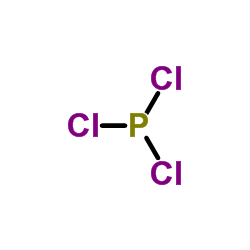
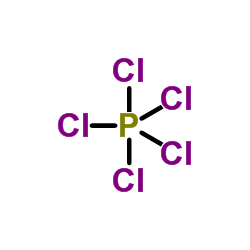



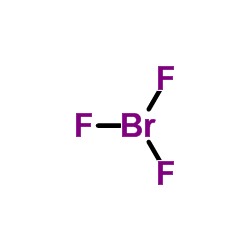
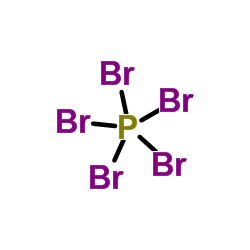

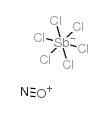
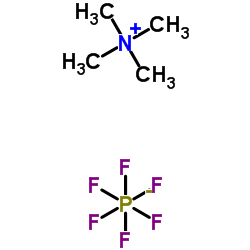

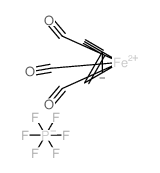





 浙公网安备 33010802013016号
浙公网安备 33010802013016号